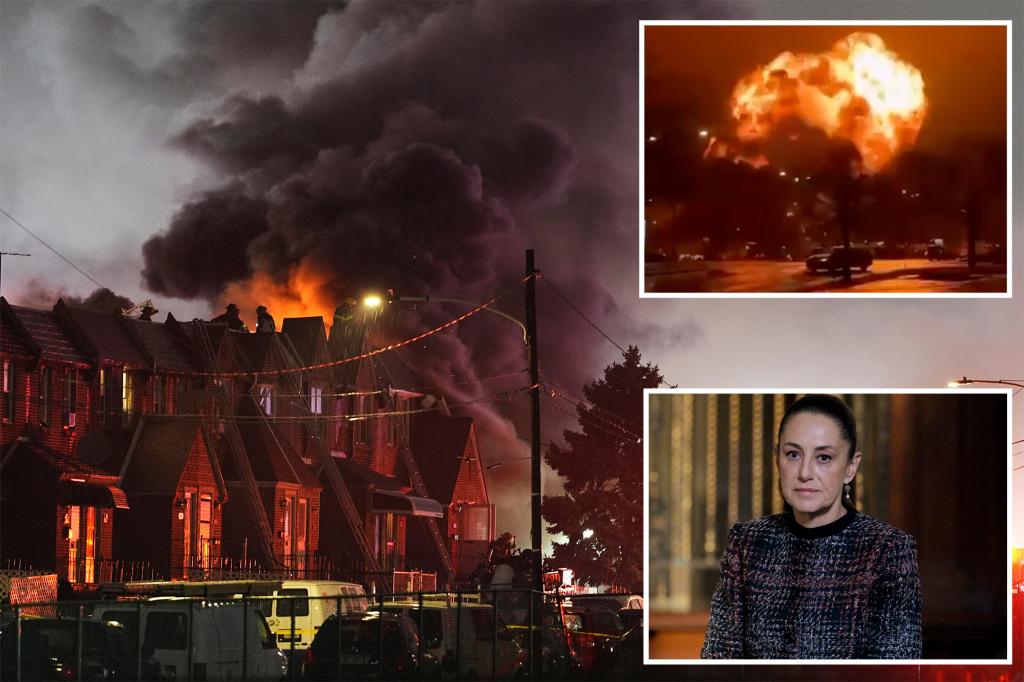The tragic crash of a medevac jet in a Philadelphia neighborhood on a Friday evening claimed the lives of six Mexican citizens, casting a somber pall over both nations. Mexican President Claudia Sheinbaum expressed her condolences via social media, confirming the nationalities of the victims and pledging full support to their families through the Ministry of Foreign Affairs. The victims included a young girl who had undergone life-saving treatment in the US, her mother accompanying her back home, a dedicated medical team consisting of a doctor and a paramedic, and the experienced flight crew comprising the pilot and co-pilot. This devastating incident underscored the inherent risks associated with air ambulance services, despite their critical role in providing urgent medical transport.
The Learjet 55, operated by Jet Rescue Air Ambulance, was en route to Springfield-Branson National Airport in Missouri when it met its untimely end. The flight originated from Northeast Philadelphia Airport, where the young patient and her entourage had embarked on what was meant to be a journey home after receiving crucial medical care. The aircraft, however, plummeted from the sky shortly after takeoff, crashing within a minute of its ascent. The swiftness of the tragedy left little time for reaction, and the subsequent investigation aimed to unravel the chain of events that led to the sudden downfall. Preliminary findings focused on mechanical failure, pilot error, and challenging weather conditions as potential contributing factors, with a comprehensive analysis to determine the precise cause.
The young girl at the center of this heart-wrenching story had received unspecified life-saving treatment in the United States, highlighting the importance of international medical collaboration and the lengths families go to for the well-being of their loved ones. Her journey to the US and subsequent return via air ambulance underscored the crucial role these services play in bridging geographical gaps in healthcare access. While the medevac flight represented a beacon of hope for the young patient and her family, it tragically turned into a symbol of loss, underscoring the unpredictable nature of life and the fragility of even the most advanced medical interventions.
The investigation into the crash involved a multi-agency effort, including the National Transportation Safety Board (NTSB), the Federal Aviation Administration (FAA), and local authorities. Their meticulous examination of the wreckage, flight data recorders, and witness testimonies sought to piece together the final moments of the flight. The investigation would delve into various aspects, including the aircraft’s maintenance history, the pilot’s experience and training, weather conditions at the time of the crash, and air traffic control communications. The findings would inform future safety protocols and potentially lead to recommendations for improving air ambulance operations, aiming to prevent similar tragedies from occurring.
The outpouring of grief and support from both the United States and Mexico reflected the shared human tragedy that transcended national boundaries. The loss of the six individuals, particularly the young girl and her mother, resonated deeply with communities on both sides of the border. The incident served as a poignant reminder of the interconnectedness of life and the importance of international cooperation in times of crisis. The shared sorrow underscored the human element amidst the technical complexities of the investigation, emphasizing the ultimate cost of such accidents.
The Philadelphia medevac jet crash serves as a stark reminder of the inherent risks associated with air travel, particularly in the context of air ambulance services. While these services provide a vital lifeline for patients requiring urgent medical transport, they operate under challenging conditions, often involving critically ill individuals and the pressure of time-sensitive situations. The tragedy prompts reflection on the balance between the benefits of these crucial services and the inherent dangers they pose. The subsequent investigation and its findings aim to improve safety standards, further mitigating risks and ensuring the continued efficacy of air ambulance operations while prioritizing the safety of patients, medical personnel, and flight crews alike.

